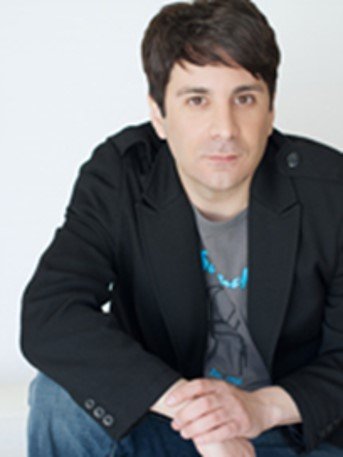By Keith Brunson
Imagine life as a car dealer. From sales to finance, all the jobs within it. All the customer deception. All the “noise” of daily operations. Now imagine you’re in that environment, and you’re a woman. Now imagine you’re a woman in the car business, and you stay in it for twenty years. Such was the case of Angela Ohlfest. “I love cars,” says Angela. “I do, but selling cars to people, well, that’s another thing.”
Angela pictured a red sports car in the high-pressure car dealership environment.
It was only a couple of years ago that Angela inhabited that world. Pressure to sell. Pressure to sell up. Pressure that yesterday’s success was null and void by the dawn of the next day. “You’re only as good as the day before, making Any day possibly your last without Any warning,” Angela comments, and “all of the signs were there that it was time to leave, so…I did.”
Angela was unhappy with the pressures of working at a car dealership.
Now 45 and living in Scottsdale, Angela has completely reinvented her life as a voiceover artist, and it’s an entirely new world. There IS no pressure because there is no team. There is no supervision, and there is no boss. What’s there IS you. You and your creativity. That resonated for Angela, and so she reinvented her life in the world of voiceover artistry. Her specialty is in long-form delivery of content, emphasizing audiobooks. So, in the last two years, Angela has recorded over (90) titles. And this is unheard of. https://www.voiceoverangela.com
Her operation is a simple remote voice over home studio, using the Sennheiser 416 and computer recording software for editing and equalization. “I don’t know why things are working so well because I don’t think of myself as special,” she says. But tell that to almost a hundred authors, and you might get a different reaction. “I like being their voice and helping that self-publishing author get heard.”
Angela also teaches and mentors on-coming talent “because I wanted to provide the help that I couldn’t get when I started.” This teaching mechanism covers everything a beginner needs to learn to become a voiceover artist. And that interest began because I love to read.
Angela enjoys reading and taking time to learn.
Oddly or not, Angela is very inward. “I’m a complete introvert,” she says, “and here in this little studio, it’s just me and the words,” and in that environment, Angela feels confident and happy.
Her T-shirt merchandise says it all. “I talk to myself in a padded room all day and get paid for it.” Voiceover gives her a sense of security that the dealership business never did. And it provides her with a sanctuary. “Absolutely an introvert. I work alone. I think alone, and I am alone.”
Angela is happy in her “sanctuary,” the in-home voice-over studio.
When you work in a car dealership, every day is about selling more cars. So how did she do it? “I don’t really know,” she says, “but when the signs appear to you that it’s time to leave, you leave…and I did, and no one seemed to care
However, In her New life, everyone cares, and she teaches and mentors others to become who they want to be. She is, in fact, a voice talent that is in demand. She’s found a place where people express themselves, and your emotions matter to everyone. Because it is That emotion that drives the effort behind the people in the audiobook industry. “I do love cars, but I have found a way to keep that love without working in it.”
Angela Ohlfest found her way into a successful voice over career.
So, whether you work in retail or molecular biology, if your life experience in the working world isn’t offering you that big emotional payoff, look at Angela’s life, and maybe you can find Your way out.
The Voice Shop can help prepare you for a lucrative career in Voice Over, a rapidly growing 15 Billion Dollar industry. The Voice Shop is a voice-over coaching and education initiative. The Voice Shop’s mission is to establish and develop the skills necessary for you to succeed as a voice over professional. Whether you are a beginner or a seasoned pro, a wide range of voiceover classes, workshops, and private lessons are taught by esteemed industry veterans, both online and in person. The Voice Shop gives you the skills and industry-savvy knowledge of VO to take your career to the next level.
http://www.voiceshopcoaching.com/






























